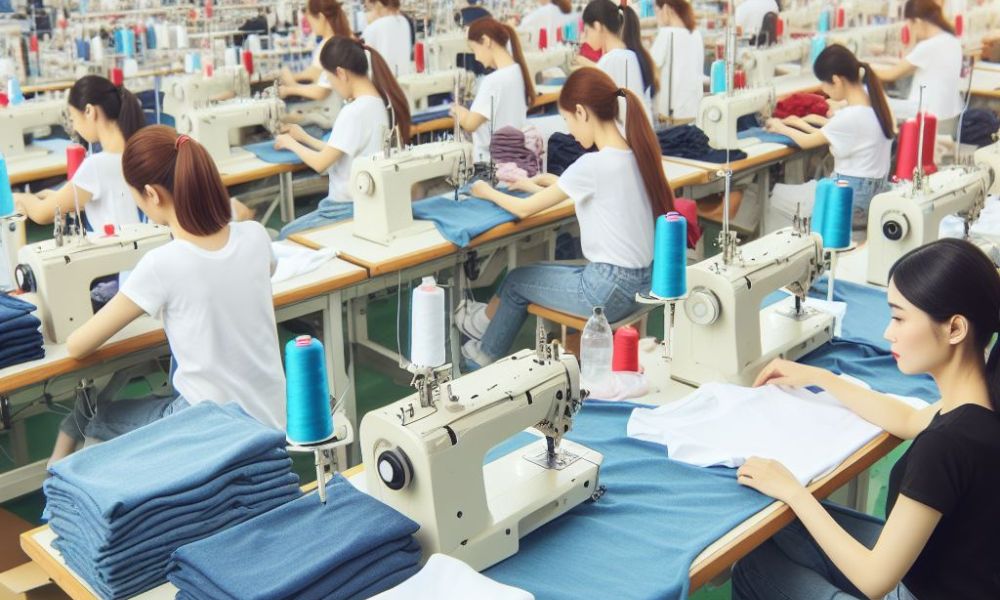Physical Address
Uttara, Dhaka

The textile industry is a vital sector in the global economy. Textiles are used in different sectors such as fashion, healthcare, automotive, and sports. The industry employs millions of people worldwide and generates billions of dollars in revenue. To meet the demands of the market, textile manufacturers need to have effective production planning and control systems. This article discusses production planning and control in the textile industry and how it can be optimized for better efficiency and profitability.
Production planning and control (PPC) is the process of managing and optimizing the production process. PPC involves planning, scheduling, and controlling the flow of materials and resources to ensure that the production process is efficient and cost-effective.
The goal of PPC is to produce high-quality products in a timely and cost-effective manner which can fulfil buyers’ demand while minimizing waste and reducing production time.
The textile industry is highly competitive, and manufacturers need to have effective PPC systems to remain competitive. Effective PPC systems can help manufacturers to:
– Meet customer demands: PPC ensures that production is in line with customer demand, ensuring that manufacturers are not overproducing or underproducing.
– Minimize waste: PPC systems can help to minimize waste by optimizing the use of materials, reducing scrap, and increasing the utilization of resources.
– Improve efficiency: PPC systems can help to improve efficiency by reducing production time, minimizing downtime, and optimizing the use of resources.
– Increase profitability: Effective PPC systems can lead to increased profitability by reducing production costs and maximizing productivity.
Production planning involves developing a production plan that outlines the resources required to meet the production schedule. The production plan takes into account factors such as customer demand, production capacity, and available resources.
One aspect of production planning and control is production planning, which deals with the fundamental ideas of what to produce, when to produce it, how much to produce, etc. It entails approaching the entire production planning with a long-term perspective.
– Customer demand: The production plan must take into account customer demand to ensure that production meets customer requirements.
– Production capacity: The production plan must consider production capacity to ensure that production can be completed within the available resources.
– Available resources: The production plan must take into account the availability of resources such as labour, raw materials, and equipment.
– Forecasting: The first step in production planning is forecasting. This involves analyzing historical data, market trends, and other factors to predict future demand.
– Developing a production plan: Once the demand forecast is complete, the next step is to develop a production plan. The production plan outlines the resources required to meet the demand forecast.
– Scheduling: The production plan is then converted into a production schedule. The production schedule outlines the production process, including the start and end dates for each operation.
Production control involves monitoring and controlling the production process to ensure that it is efficient and effective. Not every organization can have the same production control. The goal of production control is to use various control strategies to maximize system performance and meet overall production planning objectives.
– Monitoring production progress: This involves tracking the progress of production and identifying any deviations from the production plan.
– Quality control: Production control involves ensuring that products meet quality standards.
– Inventory control: Production control involves managing inventory levels to ensure that the right materials are available at the right time.
Effective production control can help manufacturers to:
– Improve quality: Production control helps to ensure that products meet quality standards.
– Minimize waste: Production control can help to minimize waste by identifying and addressing inefficiencies in the production process.
– Optimize resource utilization: Production control can help to optimize the use of resources such as labour, raw materials, and equipment.
In conclusion, production planning and control are critical to the success of textile manufacturers. Effective PPC systems can help to minimize waste, improve efficiency, and increase profitability. By taking into account factors such as customer demand, production capacity